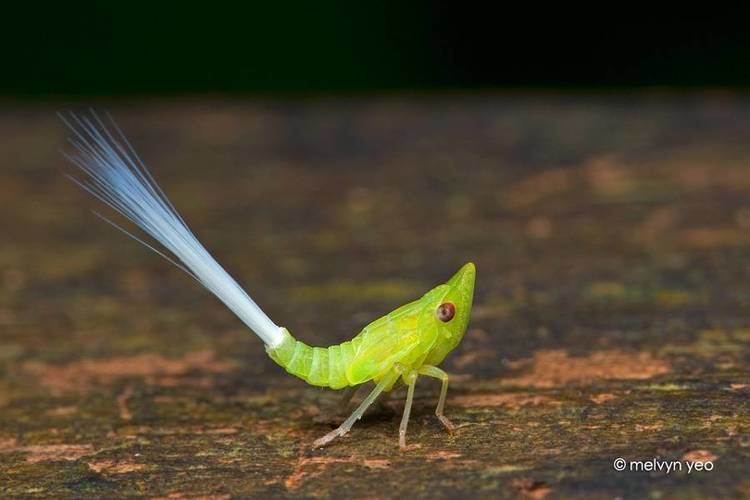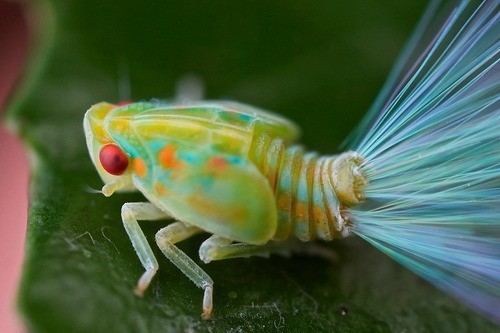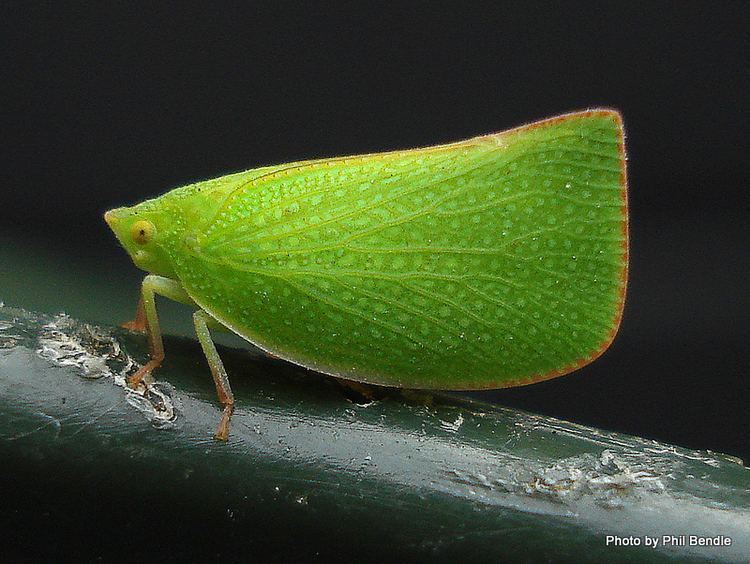Infraorder Fulgoromorpha Higher classification Fulgoromorpha | Scientific name Fulgoroidea Rank Superfamily | |
 | ||
Lower classifications | ||
Ridiculous planthopper nymphs in action
A planthopper is any insect in the infraorder Fulgoromorpha, exceeding 12,500 described species worldwide. The name comes from their remarkable resemblance to leaves and other plants of their environment and from the fact that they often "hop" for quick transportation in a similar way to that of grasshoppers. However, planthoppers generally walk very slowly so as not to attract attention. Distributed worldwide, all members of this group are plant-feeders, though surprisingly few are considered pests. The infraorder contains only a single superfamily, Fulgoroidea. Fulgoroids are most reliably distinguished from the other Auchenorrhyncha by two features; the bifurcate ("Y"-shaped) anal vein in the forewing, and the thickened, three-segmented antennae, with a generally round or egg-shaped second segment (pedicel) that bears a fine filamentous arista.
Contents
- Ridiculous planthopper nymphs in action
- Planthopper gears in action
- Overview
- Classification
- In culture
- References

Planthopper gears in action
Overview

Nymphs of many fulgoroids produce wax from special glands on the abdominal terga and other parts of the body. These are hydrophobic and help conceal the insects. Adult females of many families also produce wax which may be used to protect eggs.

Fulgoroid nymphs also possess a biological gear mechanism at the base of the hind legs, which keeps the legs in synchrony when the insects jump; the gears are not present in the adults, and were known for decades before the function of the gears was only recently discovered.

Planthoppers are often vectors for plant diseases, especially phytoplasmas which live in the phloem of plants and can be transmitted by planthoppers when feeding.
A number of extinct member of Fulgoroidea are known from the fossil record, such as the Lutetian age Emiliana from the Green River Formation in Colorado, USA.
Classification
As mentioned under Auchenorrhyncha, some authors use the name Archaeorrhyncha as a replacement for the Fulgoromorpha.
The extant families of Fulgoroidea are:
In culture
The planthopper is mentioned in a key scene from Alfred Hitchcock's film Marnie:
"In Kenya, there is quite a beautiful flower—rather like a hyacinth. If you should reach out to touch it, you would discover that the flower is not a flower at all, but a design made up of hundreds of tiny insects called flatid bugs. They escape the eyes of hungry birds by living and dying in the shape of a flower."